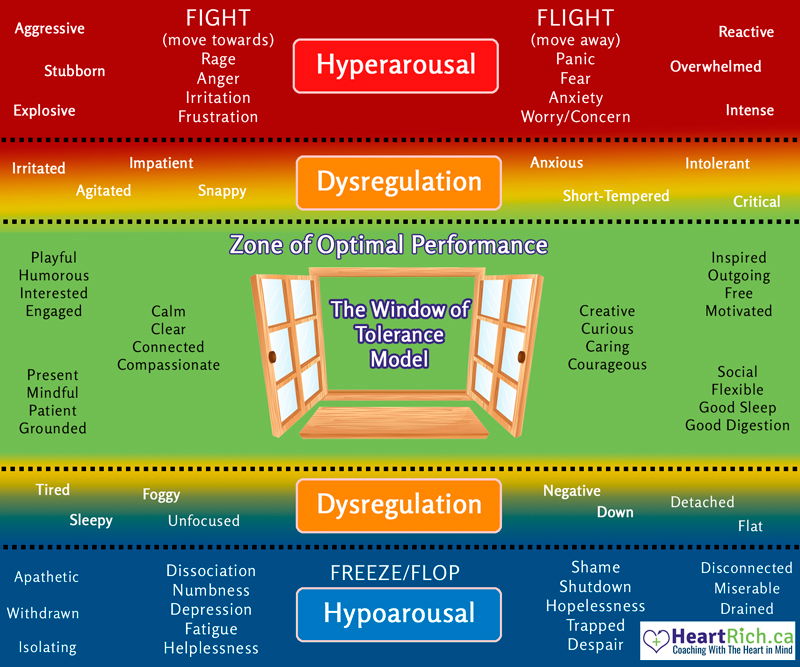Understanding the Window of Tolerance: A Guide for Parents and Carers.

By Jason Brien.
Have you ever seen your child lose it over something small—like the wrong coloured cup, loud noise, or a change in plans? Or maybe you’ve found yourself snapping after a long day, even though you promised you’d stay calm? That’s the window of tolerance at work. This simple but powerful concept helps explain why we sometimes manage stress well—and other times completely fall apart. It’s especially helpful when supporting children or individuals with emotional or behavioural challenges.
What Is the Window of Tolerance?
The window of tolerance refers to the emotional zone where we can function at our best—we’re calm, engaged, and able to think clearly. When someone is inside their window, they can:
- Handle stress and disappointment
- Respond rather than react
- Communicate clearly
- Learn and problem-solve
But when someone is pushed outside that window—by stress, sensory overload, fear, or fatigue—they either go up or down.
🔺 Hyperarousal (Too High)
This is the “fight or flight” state. Signs include:
- Anger or aggression
- Yelling, hitting, running away
- Anxiety or panic
🔻 Hypoarousal (Too Low)
This is the “freeze or shut down” state. Signs include:
- Going quiet or unresponsive
- Zoning out or withdrawing
- Feeling numb or spaced out
Children (and adults) often don’t know how to return to their window without support. That’s where we come in.
Why It Matters for Families and Carers.
Many behaviours we find challenging—meltdowns, aggression, defiance, silence—aren’t about “bad behaviour.” They’re signals that someone has been pushed outside their window of tolerance and is no longer operating from the logical part of their brain. This is especially important for:
- Children with trauma backgrounds
- Autistic children or those with sensory sensitivities
- People with ADHD or emotional regulation differences
- Anyone under chronic stress or pressure
When someone is overwhelmed, they’re not choosing their behaviour—they’re reacting from a survival state.
How to Help Someone Return to Their Window?
- Stay calm
Your nervous system influences theirs. The calmer you stay, the more you can help them co-regulate. - Don’t take it personally
Their reaction isn’t a reflection of your parenting or care—it’s a sign of distress. - Use grounding and calming tools
Try deep breaths, a quiet space, soft textures, movement, or sensory tools. These help bring their system back into the window. - Save the teaching for later
Wait until they’re calm again before discussing what happened. You can’t teach regulation to a dysregulated brain.
Growing the Window Over Time.
Some people naturally have a wide window of tolerance. Others—especially those who have experienced trauma or neurological differences—have a very narrow window, where even small stressors feel overwhelming. But windows can be widened over time, with:
- Consistent routines and expectations
- Safe, trusting relationships
- Supportive responses during emotional moments
- Opportunities to practice coping strategies when calm
Just like a muscle, the ability to regulate emotions strengthens with patience, practice, and the right environment.
Don’t Forget Your Own Window.
Carers and parents have windows of tolerance too. When yours narrows—due to stress, lack of sleep, or emotional overload—you may find yourself snapping or withdrawing more easily. It’s okay. You’re human. Learning to recognise your own signs (tight chest, short fuse, feeling shut down) helps you take steps to pause, breathe, and respond rather than react. Looking after yourself isn't selfish—it's essential to supporting others.
.
Understanding the window of tolerance helps shift our focus from control to connection. It reminds us that people don’t learn or grow through fear or punishment—they do it when they feel safe, supported, and seen. So next time you see a child escalate, freeze, or shut down, ask yourself:
Are they outside their window?
How can I help them feel safe enough to return? That one question can change the whole moment—for them and for you.